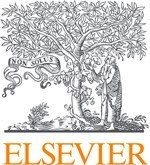
Integration of GMDN data into Embase database offers critical data to global manufacturers ahead of new regulations
NEW YORK, Feb. 20, 2020 /PRNewswire/ -- Elsevier, a global leader in information analytics specializing in science and health, is announcing its use of Global Medical Device Nomenclature (GMDN) data to provide important clinical and vigilance information on medical devices.

The new initiative will see data from GMDN, which is used by the FDA and other regulators worldwide for device approvals and certification, integrated into Elsevier's Embase database, providing a standardized, one-stop solution for manufacturers looking to develop new devices or monitor existing ones. By combining the taxonomies of Elsevier and GMDN, the aim is to provide clearer guidance to help organizations comply with new incoming regulations around device safety.
"With new devices being created for the hospital, the patient and the home, the market for medical devices is going to boom over the next few years," said Mark Wasmuth, CEO of the GMDN Agency. "Experts are already predicting it'll be worth over $430 billion USD by 20251, a figure that is likely to be boosted further as the line between drugs and devices is blurred thanks to innovations in implantables, injectables and ingestibles.
"To continue safeguarding patients, there is an urgent need for greater clarity and structure around how we monitor medical devices. We're pleased Elsevier is using the GMDN to make post-market surveillance easier and more accurate."
Historically, approvals and certifications for medical devices have been less stringent than for new drugs. However, with the new Medical Device Regulation (MDR) coming in May 2020 and the In-Vitro Diagnostic Medical Device Regulation (IVDR) in May 2022 in the European Union - as well as the expectation of similar new regimes in the United States - the environment is dynamic. The MDR will replace existing directives and put in place more rigorous requirements and additional inspections of technical documentation. Other improvements of the MDR include:
- A new risk classification system for in vitro diagnostic medical devices in line with international guidance.
- Increased transparency and traceability.
- Intensified post-market surveillance requirements for manufacturers.
- Improved coordination of vigilance and market surveillance between EU countries.
IVDR will place a range of new obligations on device manufacturers, including:
- Expanding the scope of products covered to include high-risk devices within hospitals, diagnostic (including internet based) services and genetic testing services.
- Further requirement from manufacturers to collect and retain post-market clinical data.
- Revocation of all previous provisions, meaning that companies cannot 'grandfather' in approvals.
The scope of the regulations means that this is a global challenge: it's not just manufacturers based in Europe who are affected, but any firm that wants to distribute or market to the European market.
A potential shorter avenue is the equivalence route, where a manufacturer can demonstrate sufficient equivalence with another device that is already cleared. This means that GMDN data and vocabulary, which is already used by the FDA for approvals, is especially valuable as it can dramatically smooth the approvals process.
"These new regulations place a lot more responsibility on manufacturers for post-market monitoring and clinical evidence obligations," said Cameron Ross, Managing Director of Life Science Solutions, Elsevier. "Many organizations are confused about how to go about meeting these obligations and, unless there is a standardized taxonomical approach, the result will be delays in the approvals process or even products having to be shelved entirely.
"Mapping our history and institutional knowledge of search and taxonomy to the GMDN database will enable users to quickly and easily find the information they need to prepare documentation for regulators - ultimately getting new and better devices to market so they can benefit patients."
For more information, please visit the Embase solution page.
Notes for editors
1 Sourced from: "Medical Device Market Report: Trends, Forecast and Competitive Analysis" Dallas, TX, USA. © Lucintel, 2020
About the GMDN and the GMDN Agency
The Global Medical Device Nomenclature (GMDN) is a list of generic names used to identify all medical device products. Such products include those used in the diagnosis, prevention, monitoring, treatment or alleviation of disease or injury in humans. The main purpose of the GMDN is to provide health authorities and regulators, health care providers, manufacturers and others with a naming system that can be used to exchange medical device information and support patient safety. www.gmdnagency.org
About Elsevier
Elsevier is a global information analytics business that helps scientists and clinicians to find new answers, reshape human knowledge, and tackle the most urgent human crises. For 140 years, we have partnered with the research world to curate and verify scientific knowledge. Today, we're committed to bringing that rigor to a new generation of platforms. Elsevier provides digital solutions and tools in the areas of strategic research management, R&D performance, clinical decision support, and professional education; including ScienceDirect, Scopus, SciVal, ClinicalKey and Sherpath. Elsevier publishes over 2,500 digitized journals, including The Lancet and Cell, 39,000 e-book titles and many iconic reference works, including Gray's Anatomy. Elsevier is part of RELX, a global provider of information-based analytics and decision tools for professional and business customers. www.elsevier.com
Media contacts
Mai Rinaldi for GMDN
Kelso Consulting
+44-20-7242-2286
mair@kelsopr.com
Christopher Capot, Global Communications
Elsevier
+1-917-704-5174
c.capot@elsevier.com
Logo: https://mma.prnewswire.com/media/754760/Elsevier_Logo.jpg


